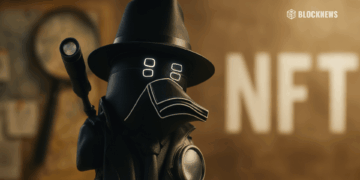- The OnChainMonkey Ordinals project recently completed a significant sale of artwork from the OCM Dimensions collection.
- The sale highlighted the unique attributes of Bitcoin Ordinals, which are digital collectibles stored directly on the Bitcoin blockchain, offering enhanced security compared to traditional crypto NFTs.
- Despite some skepticism, the sale suggests that Bitcoin Ordinals are gaining massive traction, showcasing their potential to challenge the broader NFT market.
The OnChainMonkey Ordinals project, which just completed a $1 million migration to the Bitcoin network, has accomplished one of its most significant sales to date.
The artwork, announced on Wednesday as part of the OCM Dimensions collection unveiled in June, attempted to showcase the unique characteristics of Bitcoin Ordinals when contrasted to less secure crypto NFTs.
For example, the 300 OCM Dimensions Ordinals were minted on 300 consecutive satoshis using the numbering method provided by the Ordinals protocol. Furthermore, the first 300 Ordinals were written on satoshis mined in Block 78, one of the oldest Bitcoin blocks, to see the value it unlocked trade on the open market.
According to social media posts, the buyer was identified as crypto venture entrepreneur Jason Fang.
Aside from the sales data, the sale of the Ordinal demonstrates the growing popularity of Bitcoin Ordinals, a distinct sort of digital collectible that has gained acceptance as an alternative to typical crypto NFTs (non-fungible tokens).
Unlike NFTs, Bitcoin ordinals are recorded on Bitcoin’s original blockchain and are frequently regarded as more secure owing to the fact that Bitcoin nodes store them directly.
Detractors dismiss the OCM project as a waste of Bitcoin’s scarce block space, claiming that it demonstrates that Ordinals projects can be responsible consumers of this resource, citing its use of the recursion approach, which helps reduce the data necessary to store even programmed art. (Because of the way the Bitcoin Ordinals project operates, all Ordinals are stored by all Bitcoin nodes).
As a result, public figures within the Ordinals space, such as Leonidas, have weighed in on the transaction, writing on X: “Ordinals are dead. Ordinaries, long live.”
Leonidas’ statement reflects the belief that Bitcoin Ordinals have died off as a result of dropping sales data following the big increase in minting earlier this year.
Nonetheless, the sale shows that the Ordinals market can still challenge the larger NFT industry. While crypto NFTs continue to be popular, ordinals are emerging as a viable option because they are directly linked to the most secure blockchain network in existence.














